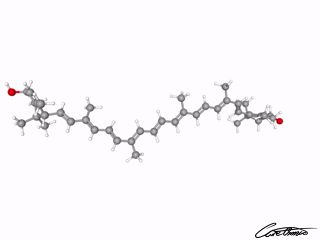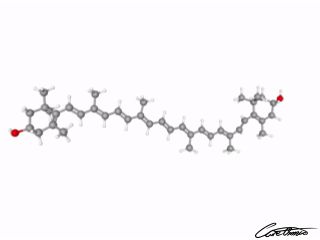Non-Provitamin A: How To Use It For Your Benefit
Non-provitamin A is a class of carotenoids that have no vitamin A activity and cannot convert to retinol.
Vitamin A is a collective name of different forms of vitamin A. They are not all equally beneficial.
Tip! Use the "Show Expanded TOC" button if you want to jump straight to a specific article.
Table of Contents
Benefits Of Non-provitamin A
Non-provitamin A carotenoids are vitamins that do not exhibit Vitamin A activity ◳. But these carotenoids are associated with a variety of health benefits, many related to Vitamin A function.
Non-provitamin A carotenoid intake has been associated with reduced incidence of cardiovascular diseases, a variety of cancers such as prostate and breast cancer and might be beneficial for bone health.
Sources Of Non-provitamin A
Vegetables and fruits contain both non-provitamin A and provitamin A carotenoids ◳.
Examples of non-provitamin A carotenoider is lutein, zeaxanthin, lycopene, phytoene and phytofluene.
There are high levels of non-provitamin A in green leafy vegetables, egg yolks, and tomatoes.
Our Articles About Lutein and Zeaxanthin
Lutein and zeaxanthin are two carotenoids with identical chemical formulas. Lutein and zeaxanthin are essential components of eye health.
Lutein + zeaxanthin (Xanthophylls)
Research suggests lutein and zeaxanthin play vital roles in ocular development throughout the lifespan, in vision performance, and in lowering the risk for the development of common age-related eye diseases.
If you are interested in knowing more about these xanthophylls, you can go to our article: What Are Lutein and Zeaxanthin & What Foods Can I Find It In?
Or if the health benefits interest you, I recommend you go to this article: Lutein + Zeaxanthin: 2 Research-Backed Benefits
If you want to read about one or the other xanthophyll, keep reading because they will come divided below.
cis-Lutein/Zeaxanthin
In nature does Luetin mainly exists in cis-form. Meanwhile, Zeaxanthins cis-form is not that common. Learn more about the cis-form of these xanthophylls in our article: What Is cis-Lutein/Zeaxanthin & What Foods Can I Find It In?
Their role in human health, in particular the health of the eye, is well established. Check out more information about the benefit in our article: cis-Lutein/Zeaxanthin: One Research-Backed Benefit
Lutein

Lutein is a carotenoid with reported anti-inflammatory properties.
You can find more information about lutein and the research behind it in our article: What Is Lutein & What Foods Can I Find It In?
Research shows that lutein has several beneficial effects on eye health and may also have positive effects in different clinical conditions.
Learn more about all the benefits this carotenoid possess in our article: Lutein: 7 Research-Backed Benefits
Zeaxanthin

Zeaxanthin is an antioxidant found in the lens and belives to protect cells in the eye. You can find more information about this carotenoid in our article: What Is Zeaxanthin & What Foods Can I Find It In?
Zeaxanthin has many benefits that you can read about in our article: Zeaxanthin: 5 Research-Backed Benefits
Our Articles About Lycopene
Lycopene is a carotenoid with antioxidant properties. It’s bright red and found in tomatoes and other red fruits.
Lycopene
Lycopene is a potent antioxidant among the dietary carotenoids. It is a unique nutrient that you can read more about in our article: What Is Lycopene & What Foods Can I Find It In?
Dietary intake of tomatoes and tomato products containing lycopene is associated with a decreased risk of chronic diseases. Read more about the many benefits lycopene have in our article: Lycopene: 6 Research-Backed Benefits
cis-Lycopene
Cis-lycopene is a unique carotenoid with health benefits similar to lycopene.
You can find information about this nutrient in our article: What Is cis-Lycopene & What Foods Can I Find It In?
The cis-isomer of lycopene is more bioavailable than the trans-isomer.
Check out its benefit in our article: cis-Lycopene: One Research-Backed Benefit
trans-Lycopene
Trans-lycopene is poorly absorbed by the body when ingested. Read more in our article: What Is trans-Lycopene?
An ordinary tomato contains mostly trans-lycopene, but when heated will trans turn into cis-lycopene, which the body easily can absorb.
trans-Lycopene does have some benefits. Find out what they are in our article: trans-Lycopene: 3 Research-Backed Benefits
Our Articles About Phytoene and Phytofluene
Phytoene and phytofluene are colorless carotenoids.
They are odd compared to other carotenoids due to their distinct chemical structure.
They occur together with lycopene in tomato and other lycopene-containing foods.
Phytoene
Phytoene has some unique characteristics for a carotenoid. Learn what they are in our article: What Is Phytoene?
Phytoene seems to have many benefits. For instance, the accumulation of phytoene in the skin may protect it. That and more benefits, you can read about in our article: Phytoene: 3 Research-Backed Benefits
Phytofluene
Phytofluene has the same unique characteristics as phytoene. Learn what they are in our article: What Is Phytofluene?
Phytofluene seems to have many benefits, for instance, antioxidant and anti-inflammatory properties. That and more benefits, you can read about in our article: Phytofluene: 3 Research-Backed Benefits
